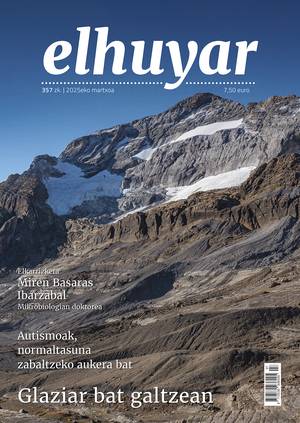Looking for connections between the brain and language

BCBLko zuzendari zientifikoa, Ikerbasque ikerlaria eta “Hizkuntzaren neurobiologia” ikertaldeko burua
Many of our research seeks to clarify the links that the brain has and the behavior of each in these types of processes; we try to isolate neural elements related to the levels of linguistic knowledge: sounds, words, meanings or grammar, and we analyze how the brain uses them to facilitate human communication.
The BCBL, thanks to the linguistic environment in which it is located, has become the research centre for multilingualism among research centres and seeks to clarify how the brain simultaneously uses multiple linguistic codes. He is also a pioneer in the field of education: he analyzes how we acquire language and learn to read from the first months of life.
In this sense, one of the fundamental aspects of the work of the BCBL is the development of strategies to diagnose and intervene early disorders and difficulties related to language (e.g., dyslexia and verbal slowness) and other pathologies. These other pathologies can occur over time or through traumatic episodes, such as aphasia, the confusion that affects the way we communicate.
Likewise, the center, within the framework of its research work, intends to propose new ways and formulas that facilitate the learning of new languages or that improve reading comprehension through different tools such as music training or the consolidation of sleep.
On the way to achieving these objectives, BCBL has made important advances in cognitive language neuroscience, for example, it has identified the main precursors of language acquisition that can serve as biomarkers for the early detection of the risk of linguistic disorders.
Different methods of early intervention are currently being studied to prevent these disorders in school-age children. To this end, the centre has a specialized laboratory at the Colegio de las Carmelitas de Vitoria-Gasteiz to implement the acquired knowledge.
Likewise, the BCBL has been able to identify the fundamental brain mechanisms involved in critical functions, such as the perception of speech, comprehension and reading.
Other lines of research that have been open in recent years have been the study of the brain networks involved in the production of speech and the analysis of neuronal plasticity associated with linguistic experience. This experience is the result of learning new languages or rehabilitation after stroke or tumors.
For the development of all these fields, BCBL laboratories incorporate state-of-the-art non-invasive neuroimaging tools, such as magnetoencephalography, functional magnetic resonance imaging, eyetracking system, or electroencephalography. All these techniques allow real-time analysis of brain activity related to language processing.
In addition, the Research Center is looking for new non-invasive methods to stimulate the brain, such as closed-loop systems. Through them, experiments can adapt to brain responses in real time and better understand causality between brain facts and behavior.
However, to really advance in the search for the links of the brain with language, it is necessary to continue to promote longitudinal research that monitors the participants over a long period of time, which requires more resources and more volunteers that contribute to clarify these neurocognitive mechanisms.






